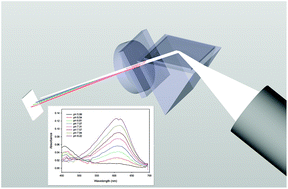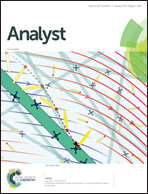Broadband absorption spectroscopy for rapid pH measurement in small volumes using an integrated porous waveguide
Abstract
Broadband absorption spectroscopy integrated with microfluidics is widely used to measure the pH of samples available in small volumes. Single pass absorption spectroscopy, however, suffers from poor minimum detectable absorption coefficient because the optical path length is determined by the physical dimensions of microchannels. As a result, either large amounts of indicator dyes are added or instrumentally complex techniques are used to determine sample pH. This work addresses these limitations by the integration of metal-clad leaky waveguide (MCLW) with microfluidics to perform broadband absorption spectroscopy. The MCLW consisted of a porous agarose waveguide with an estimated thickness and swelling ratio values of 1.405 ± 0.009 μm and 20.96 ± 0.65% respectively coated onto a titanium layer 32.8 ± 0.43 nm thick on a glass slide. MCLW permits obtaining absorption spectra over most of the wavelength range of the visible region (i.e. 450 nm to 700 nm) with a speed of 12.5 spectra per second using 3.2 nl of sample. The minimum detectable decadic absorption coefficient measured using MCLW was 0.43 cm−1, which is intermediate between single pass absorption spectroscopy and instrumentally complex techniques such as broadband cavity enhanced absorption spectroscopy and whispering gallery mode resonators.


 Please wait while we load your content...
Please wait while we load your content...